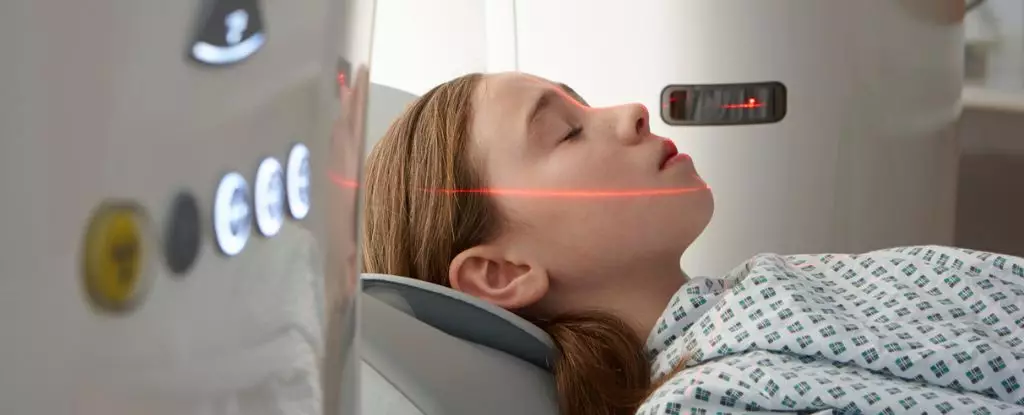In recent years, the reliance on computed tomography (CT) scans has surged in the United States, with over 93 million scans conducted in 2023 alone. This impressive figure, representing an increase of more than 30 percent since 2007, reflects not only an advancement in medical technology but also a significant shift in how health issues are diagnosed. CT scans have revolutionized our approach to diagnosing various conditions with speed and precision, allowing for an accurate look inside the human body that many traditional imaging techniques cannot match. However, the dramatic increase prompts a crucial discussion about the balance between the benefits and risks associated with such widely embraced diagnostic tools.
Understanding the Radiation Concerns
Despite their life-saving potential, CT scans carry an inherent risk associated with their use of ionizing radiation. While experts believe that the individual cancer risk from a single CT scan is likely negligible, population-level analyses raise troubling predictions. Recent research suggests that these low levels of ionizing radiation could theoretically be linked to approximately 5 percent of all new cancer cases diagnosed in the US. Estimates indicate that the scans conducted in 2023 could contribute to about 103,000 future cancer cases—a staggering figure that places CT scans alongside other known carcinogenic factors like alcohol consumption in terms of potential impact.
This scrutiny over radiation exposure cannot be dismissed lightly. Researchers emphasize the importance of considering both the immediate benefits and long-term consequences of routine CT scan utilization. The crux of the dilemma resides in the fact that while CT scans are heralded for their diagnostic capabilities, the cumulative exposure to radiation over time might lead to increased cancer risks that demand attention.
Controversial Link Between Low Radiation and Cancer
The link between low doses of ionizing radiation and cancer remains a contentious issue within the scientific community. Much of the evidence is extrapolated from long-term studies of atomic bomb survivors and those affected by nuclear incidents, which may not accurately reflect the risks posed by routine medical imaging. Historical data indicates a slight uptick in cancer cases among populations exposed to significant radiation doses, but whether this information directly correlates to the moderate exposures experienced during CT scans is still under debate.
This uncertainty raises questions about the formal understanding of cancer causation and the continued use of CT scans. Experts like Rebecca Smith-Bindman, who leads a team investigating these dynamics, highlight the need for further research to better understand the nuances of low-level radiation exposure, particularly concerning sensitive groups like children and young adults. The anticipation of future cancer cases attributed to CT scans underscores the importance of ongoing surveillance and investigation into radiation effects.
The Benefits vs. Risks Dilemma
The dilemma surrounding the use of CT scans hinges on the balance of their diagnostic benefits against the potential risks of collective radiation exposure. For patients, understanding the weight of this decision can be daunting, especially when faced with a recommendation for a CT scan by their healthcare provider. The reality is that CT scans provide unparalleled insights into a range of medical conditions—from detecting tumors or internal bleeding to diagnosing complex injuries and diseases—that might not be visible through conventional imaging techniques.
Medical professionals like Pradip Deb and Naomi Gibson emphasize that while caution is warranted regarding long-term radiation exposure, this should not deter the use of CT imaging when clinically justified. They propose that unnecessary scans should be avoided where non-radiation-based diagnostic methods can achieve similar results. This perspective calls for a degree of vigilance that may compel both patients and healthcare providers to engage in informed discussions about the necessity of imaging procedures and the considerations that inform such decisions.
The Need for Future Research and Policy Adjustments
As we move forward, the conversation about CT scans and radiation exposure must evolve. The existing data highlights the urgency for comprehensive studies that include diverse demographics and account for varying exposure levels based on factors like age, sex, and health history. Policymakers and healthcare institutions must prioritize research initiatives that aim to clarify the connection between low-dose radiation and cancer, ultimately aiding in developing guidelines that can safeguard public health.
In an era where technology is irrevocably intertwined with medical practice, this dialogue is more important than ever. Educating patients about the potential risks of diagnostic procedures, promoting alternative imaging techniques when appropriate, and implementing strict guidelines for CT scan usage are all necessary steps towards ensuring the efficacy and safety of modern healthcare practices. The challenge lies in retaining confidence in the capabilities of CT technology while remaining vigilant about its potential harms—an endeavor requiring collaboration, innovation, and responsible medical stewardship.

